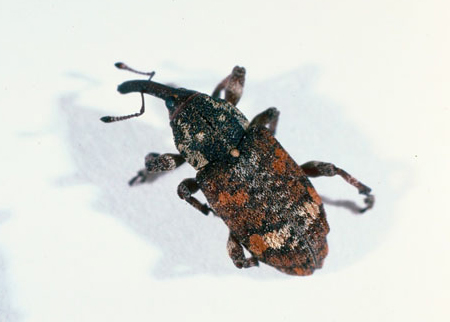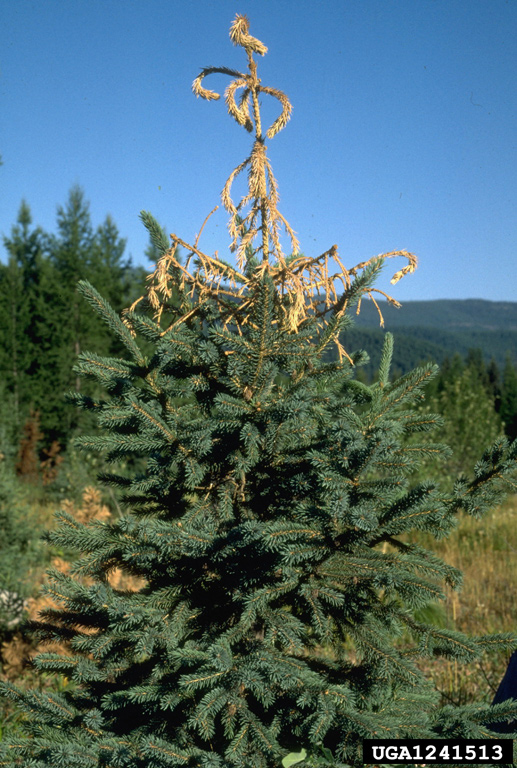Integrated Pest Management
White Pine Weevil
Pissodes strobi
Pest Description
- adults: ~ 1/4 inch; long snout; black with white/orangish flecks
- larvae: up to 3/8 inch long; white grubs without legs; brown head capsule
Host Plants, Diet & Damage
- primarily blue spruce; white pine
- common at high elevations (e.g., Wasatch and Summit counties) or in nursery situations
- larvae feed under the bark of terminal leaders
- larvae girdle young (1-3 years) leader growth only
- damaged trees have bushy appearance; reduced growth
- dead leaders turn brown and curl (shepherd’s crook)
- dead leaders riddled with holes and stringy frass
- severe damage is rare
Biology, Life Cycle & Damaging Life Stage
- overwinter as adults in duff around trunks
- adults migrate up trunks (or fly) to canopy in late spring
- feed and lay eggs below the terminal buds
- feed and pupate within the terminal and emerge from late-July through fall
- minor adult feeding occurs until dormancy in fall
- one generation per year
- larvae are the primary damaging stage
IPM Recommendations
- Manage trees to improve or maintain overall health.
- Monitor spruce trees in June/July for terminal death.
- Prune infested terminals prior to adult emergence.
- Apply an insecticide (pyrethroid) to target feeding/egg laying adults on the top 3 to 4 years of terminal growth and the lower trunk prior to emergence in spring.
- Apply a systemic neonicitinoid soil drench in fall to control larvae the following year.




